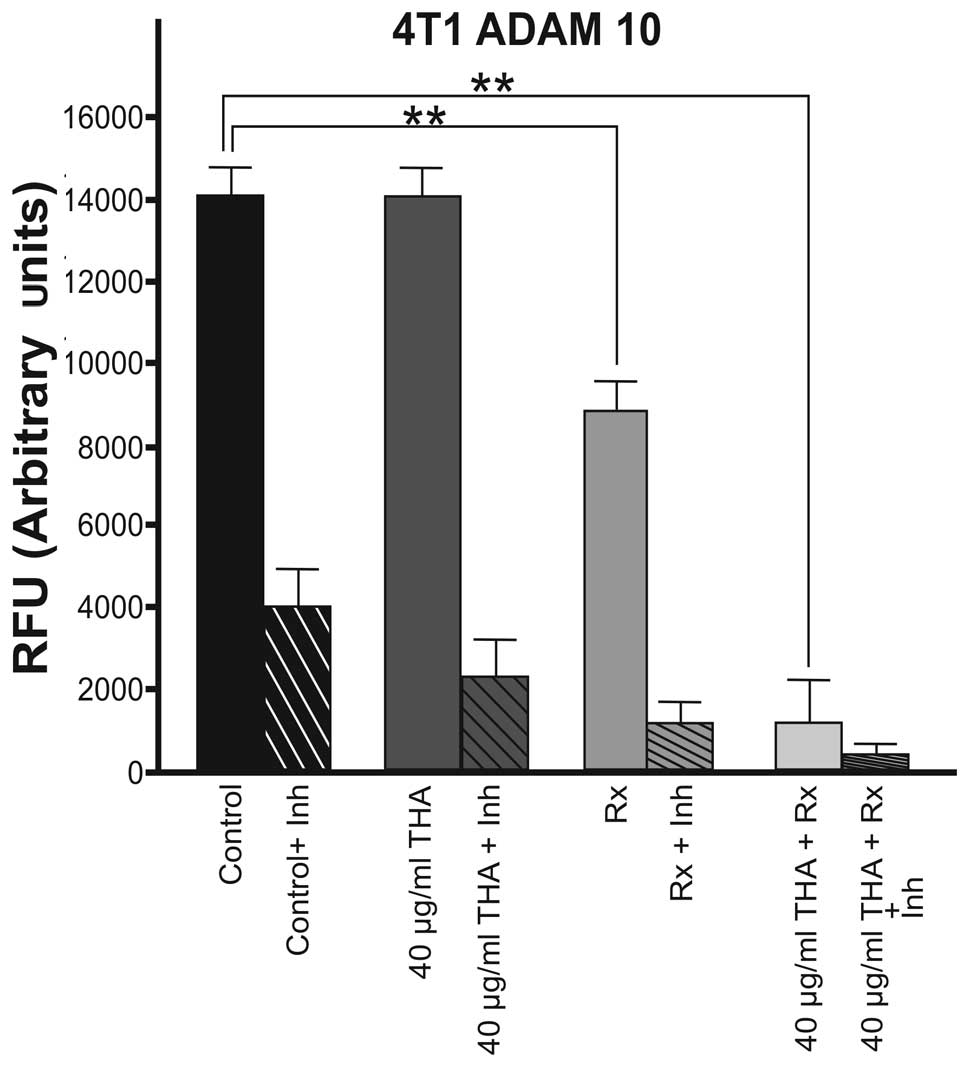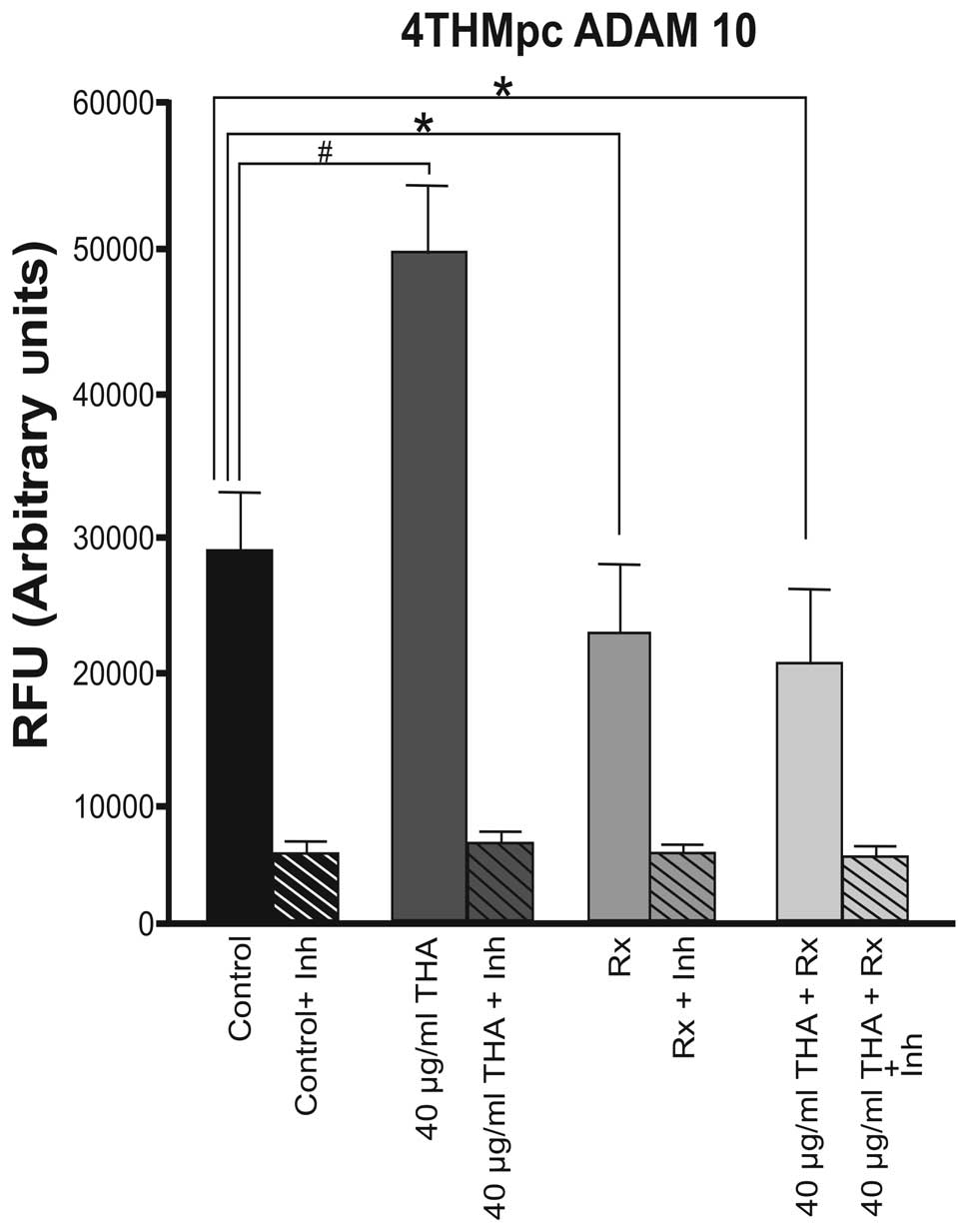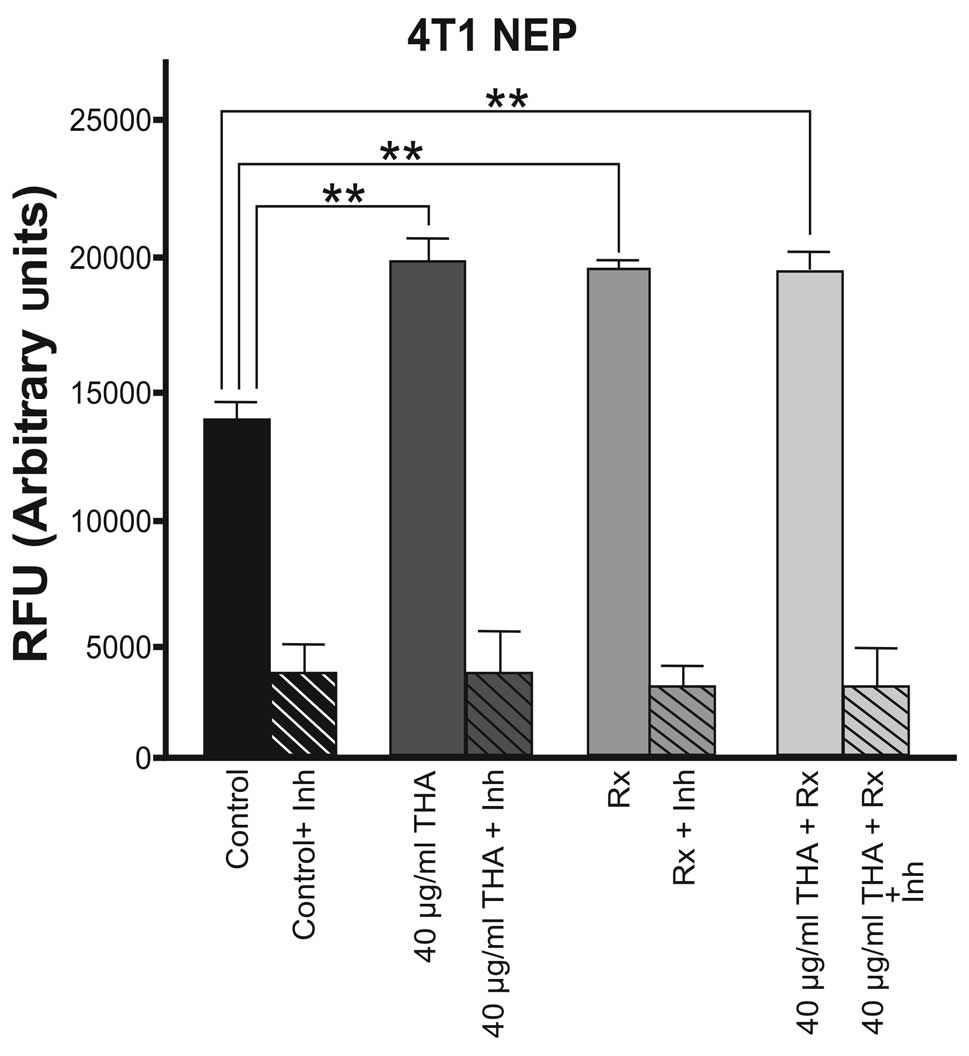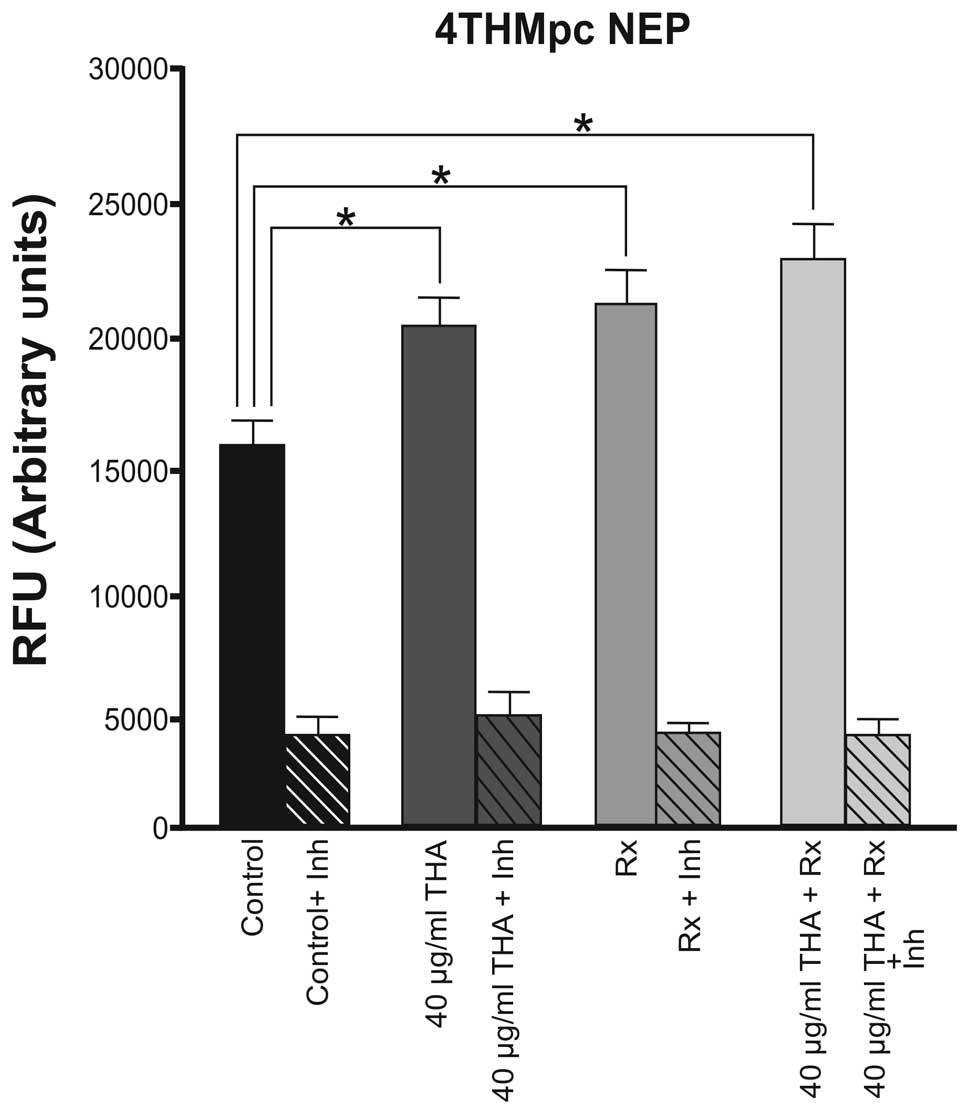|
1
|
Papaiakovou VE, Bamias A and Dimopoulos
MA: Thalidomide in cancer medicine. Ann Oncol. 15:1151–1160. 2004.
View Article : Google Scholar
|
|
2
|
D’Amato RJ, Loughnan MS, Flynn E, et al:
Thalidomide is an inhibitor of angiogenesis. Proc Natl Acad Sci
USA. 91:4082–4085. 1994. View Article : Google Scholar
|
|
3
|
Kenyon BM, Browne F and D’Amato RJ:
Effects of thalidomide and related metabolites in a mouse corneal
model of neovascularization. Exp Eye Res. 64:971–978. 1997.
View Article : Google Scholar : PubMed/NCBI
|
|
4
|
Bauer KS, Dixon SC and Figg WD: Inhibition
of angiogenesis by thalidomide requires metabolic activation, which
is species-dependent. Biochem Pharmacol. 55:1827–1834. 1998.
View Article : Google Scholar : PubMed/NCBI
|
|
5
|
Majumdar S, Lamothe B and Aggarwal BB:
Thalidomide suppresses NF-κB activation induced by TNF and
H2O2, but not that activated by ceramide,
lipopolysaccharides, or phorbol ester. J Immunol. 168:2644–2651.
2002. View Article : Google Scholar : PubMed/NCBI
|
|
6
|
Macpherson GR, Franks M, Tomoaia-Cotisel
A, et al: Current status of thalidomide and its role in the
treatment of metastatic prostate cancer. Crit Rev Oncol Hematol.
46:49–57. 2003. View Article : Google Scholar
|
|
7
|
Eichhorn ME, Kleespies A, Angele MK, et
al: Angiogenesis in cancer: molecular mechanisms, clinical impact.
Langenbecks Arch Surg. 392:371–379. 2007. View Article : Google Scholar : PubMed/NCBI
|
|
8
|
Folkman J, Watson K, Ingber D, et al:
Induction of angiogenesis during the transition from hyperplasia to
neoplasia. Nature. 339:58–61. 1989. View
Article : Google Scholar : PubMed/NCBI
|
|
9
|
Jain RK: Normalizing tumor vasculature
with anti-angiogenic therapy: a new paradigm for combination
therapy. Nat Med. 7:987–989. 2001. View Article : Google Scholar : PubMed/NCBI
|
|
10
|
Huang Z and Bao SD: Roles of main pro- and
anti-angiogenic factors in tumor angiogenesis. World J
Gastroenterol. 10:463–470. 2004.PubMed/NCBI
|
|
11
|
Eichhorn ME, Strieth S and Dellian M:
Anti-vascular tumor therapy: recent advances, pitfalls and clinical
perspectives. Drug Resist Updat. 7:125–138. 2004. View Article : Google Scholar : PubMed/NCBI
|
|
12
|
Rajkumar SV: Current status of thalidomide
in the treatment of cancer. Oncology (Williston Park). 15:867–874.
2001.
|
|
13
|
Sumner SC, Gallagher KS and Davis DG:
Conformational analysis of the tachykinins in solution: substance P
and physalaemin. J Biomol Struct Dyn. 8:687–707. 1990. View Article : Google Scholar : PubMed/NCBI
|
|
14
|
Carter MS and Krause JE: Structure,
expression and some regulatory mechanisms of the rat
preprotachykinin gene encoding substance p, neurokinin a,
neuropeptide k, and neuropeptide gamma. J Neurosci. 10:2203–2214.
1990.PubMed/NCBI
|
|
15
|
Erin N and Ulusoy O: Differentiation of
neuronal from non-neuronal Substance P. Regul pept. 152:108–113.
2009. View Article : Google Scholar
|
|
16
|
Harrison S and Geppetti P: Substance p.
Int J Biochem Cell Biol. 33:555–576. 2001. View Article : Google Scholar : PubMed/NCBI
|
|
17
|
Erin N, Zhao W, Bylander J, et al:
Capsaicin-induced inactivation of sensory neurons promotes a more
aggressive gene expression phenotype in breast cancer cells. Breast
Cancer Res Treat. 99:351–364. 2006. View Article : Google Scholar : PubMed/NCBI
|
|
18
|
Erin N, Boyer PJ, Bonneau RH, et al:
Capsaicin-mediated denervation of sensory neurons promotes mammary
tumor metastasis to lung and heart. Anticancer Res. 24:1003–1009.
2004.PubMed/NCBI
|
|
19
|
Harrison LB, Chadha M, Hill RJ, et al:
Impact of tumor hypoxia and anemia on radiation therapy outcomes.
Oncologist. 7:492–508. 2002. View Article : Google Scholar : PubMed/NCBI
|
|
20
|
Rampling R, Cruickshank G, Lewis AD, et
al: Direct measurement of pO2 distribution and bioreductive enzymes
in human malignant brain tumors. Int J Radiat Oncol Biol Phy.
29:427–431. 1994. View Article : Google Scholar
|
|
21
|
Lartigau E, Randrianarivelo H, Avril MF,
et al: Intratumoral oxygen tension in metastatic melanoma. Melanoma
Res. 7:400–406. 1997. View Article : Google Scholar
|
|
22
|
Nordsmark M, Hoyer M, Keller J, et al: The
relationship between tumor oxygenation and cell proliferation in
human soft tissue sarcomas. Int J Radiat Oncol Biol Phys.
35:701–708. 1996. View Article : Google Scholar : PubMed/NCBI
|
|
23
|
Movsas B, Chapman JD, Greenberg RE, et al:
Increasing levels of hypoxia in prostate carcinoma correlate
significantly with increasing clinical stage and patient age: an
Eppendorf pO(2) study. Cancer. 89:2018–2024. 2000. View Article : Google Scholar : PubMed/NCBI
|
|
24
|
Mundt AJ, Connell PP, Campbell T, et al:
Race and clinical outcome in patients with carcinoma of the uterine
cervix treated with radiation therapy. Gynecol Oncol. 71:151–158.
1998. View Article : Google Scholar : PubMed/NCBI
|
|
25
|
Vaupel P, Briest S and Höckel M: Hypoxia
in breast cancer: pathogenesis, characterization and
biological/therapeutic implications. Wein Med Wochenschr.
152:334–342. 2002. View Article : Google Scholar
|
|
26
|
Harrison L and Blackwell K: Hypoxia and
anemia: factors in decreased sensitivity to radiation therapy and
chemotherapy? Oncologist. 9:31–40. 2004. View Article : Google Scholar : PubMed/NCBI
|
|
27
|
Oz ES, Aydemir E, Korcum AF and Fiskin K:
Thalidomide and irradiation combination therapy increases substance
P levels in vitro. Exp Ther Med. 2:529–535. 2011.PubMed/NCBI
|
|
28
|
D’Amato RJ, Loughnan MS, Flynn E, et al:
Thalidomide is an inhibitor of angiogenesis. Proc Natl Acad Sci
USA. 91:4082–4085. 1994. View Article : Google Scholar
|
|
29
|
Bartlett JB, Dredge K and Dalgleish AG:
The evolution of thalidomide and its IMiD derivatives as anticancer
agents. Nat Rev Cancer. 4:314–322. 2004. View Article : Google Scholar : PubMed/NCBI
|
|
30
|
Downs LS Jr, Rogers LM, Yokoyama Y and
Ramakrishnan S: Thalidomide and angiostatin inhibit tumor growth in
a murine xenograft model of human cervical cancer. Gynecol Oncol.
98:203–210. 2005. View Article : Google Scholar : PubMed/NCBI
|
|
31
|
Vandeputte-Rutten L and Gros P: Novel
proteases: common themes and surprising features. Curr Opin Struc
Biol. 12:704–708. 2002. View Article : Google Scholar
|
|
32
|
Chubinskaya S, Mikhail R, Deutsch A and
Tindal MH: ADAM-10 protein is present in human articular cartilage
primarily in the membrane-bound from and is upregulated in
osteoarthrits and in response to IL-1 alpha in bovine nasal
cartilage. J Histochem Cytochem. 49:1165–1176. 2001. View Article : Google Scholar : PubMed/NCBI
|
|
33
|
Turner AJ and Hooper NM: The
angiotensin-converting enzyme gene family: genomics and
pharmacology. Trends Pharmacol Sci. 23:177–183. 2002. View Article : Google Scholar : PubMed/NCBI
|
|
34
|
Shipp MA, Richardson NE, Sayre PH, et al:
Molecular cloning of the common acute lymphoblastic leukemia
antigen (CALLA) identifies a type II integral membrane protein.
Proc Natl Acad Sci USA. 85:4819–4823. 1988. View Article : Google Scholar : PubMed/NCBI
|
|
35
|
Luo W, Sharif TR and Sharif M: Substance
P-induced mitogenesis in human astrocytoma cells correlates with
activation of the mitogenactivated protein kinase signaling
pathway. Cancer Res. 56:4983–4991. 1996.PubMed/NCBI
|
|
36
|
Defea KA, Zalevsky J, Thoma MS, et al:
Beta arrestin-dependent endocytosis of proteinase-activated
receptor 2 is required for intracellular targeting of activated
ERK1/2. J Cell Biol. 148:1267–1281. 2000. View Article : Google Scholar : PubMed/NCBI
|
|
37
|
Bhatia M, Saluja AK, Hofbauer B, Frossard
JL, Lee HS, Castagliuolo I, Wang CC, Gerard N, Pothoulakis C and
Steer ML: Role of substance P and the neurokinin 1 receptor in
acute pancreatitis and pancreatitis-associated lung injury. Proc
Natl Acad Sci USA. 95:4760–4765. 1998. View Article : Google Scholar : PubMed/NCBI
|
|
38
|
Garcia-Recio S, Fuster G,
Fernandez-Nogueira P, Pastor-Arroyo EM, Park SY, Mayordomo C,
Ametller E, Mancino M, Gonzalez-Farre X, Russnes HG, et al:
Substance P autocrine signaling contributes to persistent HER2
activation that drives malignant progression and drug resistance in
breast cancer. Cancer Res. 73:6424–6434. 2013. View Article : Google Scholar : PubMed/NCBI
|
|
39
|
Muñoz M and Coveñas R: Neurokinin-1
receptor: a new promising target in the treatment of cancer. Discov
Med. 10:305–313. 2010.PubMed/NCBI
|
|
40
|
Esteban F, Muñoz M, González-Moles MA and
Rosso M: A role for substance P in cancer promotion and
progression: a mechanism to counteract intracellular death signals
following oncogene activation or DNA damage. Cancer Metastasis Rev.
25:137–145. 2006. View Article : Google Scholar : PubMed/NCBI
|















